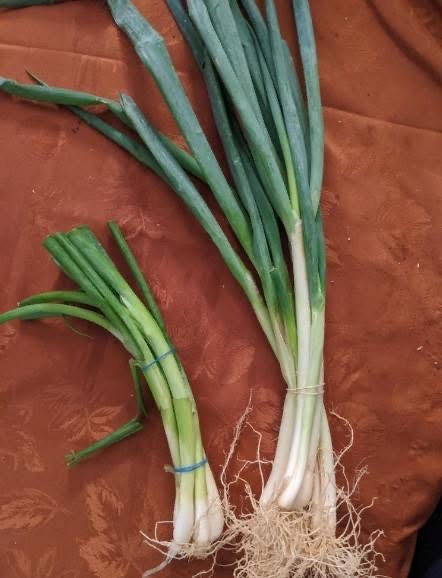The distinction between chives, spring onions, scallions, and green onions

Introduction
In the culinary world, green-topped alliums often cause confusion—are chives, spring onions, scallions, and green onions the same thing? While they may look similar and share a mild onion-like flavor, they each have unique characteristics, appearances, and uses. Knowing the difference can enhance your cooking, helping you choose the right ingredient for flavor, texture, and presentation.
Origin and Cultural Significance
All of these plants belong to the Allium family, which has been cultivated for thousands of years across Asia, Europe, and the Middle East. In many cuisines, these ingredients are more than just garnishes—they’re integral to flavor building. In Chinese, Japanese, and Korean cooking, scallions and spring onions add freshness to soups, stir-fries, and marinades. In European cuisine, chives have long been used to bring a delicate onion essence to dishes without overpowering them. The subtle differences between them reflect regional growing practices, seasonal availability, and evolving culinary traditions.
Ingredients Quantity
Here’s a breakdown of each:
Chives – Very thin, hollow green stalks with no bulb; mild onion flavor, often used raw as a garnish.
Scallions – Long green stalks with a white base that is slightly swollen but not bulbous; mild, slightly peppery onion flavor; edible from top to bottom.
Green onions – Essentially the same as scallions; the names are interchangeable in most regions.
Spring onions – Look similar to scallions but with a more developed, rounded white bulb; stronger onion flavor and suitable for both raw and cooked dishes.
Optional Additions
When using these in cooking, you can:
Add garlic chives for a garlicky twist.
Use leeks for a more robust, sweet onion flavor.
Incorporate shallots when you need a deeper, more aromatic taste.
Mix different alliums for layered flavor in soups, omelets, or salads.
Tips for Success
Use chives as a garnish rather than cooking them extensively, as heat can destroy their delicate flavor.
Scallions and green onions can be eaten raw for crunch or lightly sautéed for sweetness.
Spring onions are ideal for grilling or roasting due to their slightly stronger flavor and larger bulb.
Store all alliums in the refrigerator, wrapped in a damp paper towel inside a plastic bag, to extend freshness.
Instructions
Identify the ingredient by its stalk thickness, bulb size, and flavor intensity.
Choose chives for fine garnishes, scallions/green onions for versatile raw or cooked use, and spring onions for bolder onion flavor.
Wash thoroughly before chopping, as dirt often collects near the roots.
Slice according to your recipe’s needs—thin for garnishes, thicker for grilling or roasting.
Description
Chives, scallions, green onions, and spring onions may share a family tree, but each has distinct visual and flavor profiles. Chives are delicate and grassy, scallions and green onions are mild and versatile, and spring onions offer a more pronounced onion taste. Mastering these distinctions ensures your dishes have the right balance of freshness, sweetness, or bite.
Nutritional Information
All four are low in calories and rich in vitamins A, C, and K, as well as antioxidants. They add flavor without significant fat or sodium, making them excellent for healthy cooking. Chives, in particular, are high in beneficial plant compounds like allicin, known for its antimicrobial properties.
Conclusion
While their similarities can cause mix-ups, chives, scallions, green onions, and spring onions each have a distinct place in the kitchen. Understanding their differences allows you to elevate your cooking with the perfect allium for every dish.
Recommendation
Keep at least one variety on hand to add freshness and flavor to your meals. For versatility, scallions (or green onions) are a great go-to, while chives work best for finishing touches and spring onions shine in cooked preparations.
Embracing Healthful Indulgence
Swapping heavy flavorings for fresh, green alliums is a simple way to enjoy bold taste while keeping dishes light and nutritious. By appreciating the nuances between these ingredients, you can indulge your palate while nourishing your body.